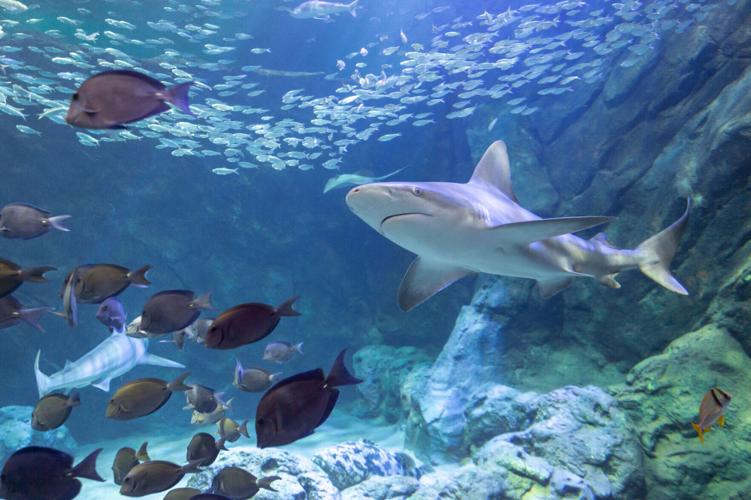
Dive in ã the sharks are back.
is making waves again with the return of ãSummer of the Shark,ã an exhibit that brings guests face to face with sharks up to 6 feet long.
The popular exhibit runs through Labor Day and features special shark-themed attractions, interactive experiences and games, and hands-on educational encounters with the oceanãs most fascinating predators. Oh, and one daily shark dive in which two scuba divers entertain guests with fun facts while underwater, with sharks swimming around them.

ãSummer of the Sharkã is a touring exhibit, and it is organized by the American Museum of Natural History. The exhibitãs panels and activities tie in to the aquariumãs 250,000-gallon tank that features 17 sharks representing seven different species. The largest, a sand bar shark, measures 6 feet in length.
ãThe exhibit went so well last summer we brought it back,ã said Tami Brown, executive director of the aquarium. ãI think it had so much impact because every guest sets foot into the aquarium with some level of fear of sharks. Our goal is by the time you leave here you might still have that fear, but you will have learned some pretty cool things about sharks and maybe feel a little more relaxed when you think about them swimming in the ocean with you.ã
Brown said one fun fact visitors are continually mesmerized by is that she and her staff find shark teeth in the aquariumãs habitat all the time. In fact, a typical shark can lose and regrow nearly 30,000 teeth in their lifetime. As part of the ãSummer of the Sharkã exhibit, guests will be able to uncover more fun facts about shark teeth with the Shark Activity Cart ã and even feel the texture of shark skin.

Other activities include a Shark Feeding event where guests can practice feeding skills using a lifelike faux shark to perfect their technique. They will learn how to identify and care for sharks in the Vet Health encounter area. And theyãll step into the world of shark research and learn why scientists track sharks, the vital data they collect and how this information helps protect these creatures. Visitors will also have the opportunity to track an adopted shark and practice ãtaggingã it by tossing a ring onto a faux dorsal fin.
The crux of the exhibit, though, is to teach water stewardship.
ãOur mission, both here at the aquarium through our foundation and with our exhibits, is to educate and teach people that what we do in landlocked ûÜî¢Ç¨û§ does indeed have an impact on our oceans,ã Brown said. ãWe may not be close to an ocean, but the Mississippi River flows directly into the Gulf of Mexico. So, yes, everything we do in ûÜî¢Ç¨û§ connects each one of us to that giant body of water. Our goal is to help make that connection and hope they leave here saying, ãI can make these changes in my life.ãã

One of the activities enhances this connection with photos of the inside of the stomachs of two sharks. One of them has fish in its stomach. The other, candy wrappers.
ãThis, obviously, is what we donãt want the shark to eat,ã Brown said. ãThe plastic, even from plastic bags and water bottles, fill their stomachs and they canãt get rid of it. When guests can actually see the damage the waste creates, it has a bigger impact on them. Perhaps theyãll leave here and decide not to use plastic bags, or drink more tap water, for example.ã
Guests will also learn about how the threat of overfishing is drastically impacting the sharkãs population levels.
ãWhat this exhibit does is show the positive impact these species have on our oceans. They are apex predators and keep our oceans healthy. We need them.ã
To learn more about the ãSummer of the Sharkã exhibit, please visit .










